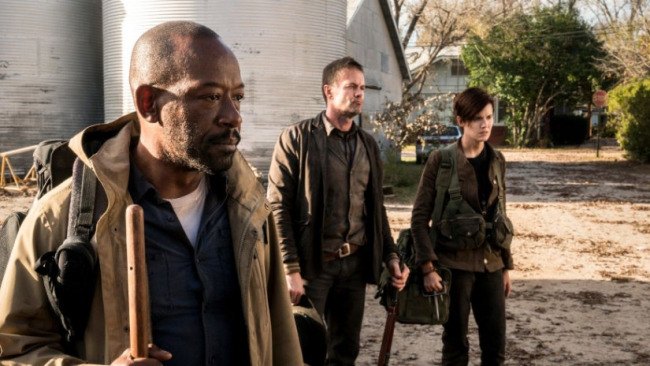
In 2015, when AMC introduced Fear the Walking Dead, it put up huge numbers out of the gate, grabbing 10 million overnight viewers with its premiere episode before settling down into the 6 million range for rest of season one. The disastrous season two of the series — which saw the main characters spend a lot of time on the ocean battling underwater zombies — saw a precipitous 50 percent decline in viewers, dropping to around 3 million overnight viewers with the second season finale. The third, considerably improved season, leveled off some, though ratings did continue to decline. The third season finale dropped to 2.23 million overnight viewers and 3.4 million viewers after three days of DVR was factored in.
Seeing the continued declines of the series, Fear the Walking Dead completely retooled. It brought in two new showrunners in Ian Goldberg and Andrew Chambliss; it brought back only five characters from the season three (killing off two over the course of the first eight episodes); introduced three new characters played by Garret Dillahunt, Maggie Grace, and Jenna Elfman; relocated the series from Mexico to Texas; and brought Lennie James over from The Walking Dead. Not only did season four begin with a new pace and a different tone, but the kind of stories Fear began telling were more character-based, while the series also played in different timelines.
Did the reboot work to improve the ratings? Yes, and no. Out of the gate, Fear the Walking Dead rebounded with 4 million overnight viewers, the highest ratings for the series since the midseason finale of the second season. However, the fourth season premiere had the benefit of a lead-in from The Walking Dead and the crossover of Lennie James, which had weeks of promotion and hype. However, Fear could not hang on to all of those viewers, as ratings eventually receded back to their season three levels. Overnight ratings for the fourth mid-season finale were on par with the third-season finale (2.32 million viewers compared to 2.23 million viewers), although once DVR viewers were factored in, the midseason finale improved upon the third-season finale by 400,000 viewers.
In other words, while Fear did not see a dramatic improvement over season three, it not only put a stop to the ratings erosion, it improved slightly upon the previous year’s ratings.
Moreover, with 3.8 million live and DVR viewers, Fear continues to dominate the cable ratings. It doesn’t put up numbers as big as Game of Thrones or The Walking Dead, but it does continue to outperform all of its currently-airing cable competition. Not only was the season finale the highest rated show on cable during the week that it aired, it beat out its competition over on HBO, Westworld, by a healthy 1.4 million viewers, even though ratings for Westworld have largely improved over its first season.
The question that remains, however, is how well Fear the Walking Dead will continue to perform when it returns later this summer, having lost two of its longest-serving and most popular characters this season, including its lead. We’ll find out when Fear returns on August 12th with only two characters remaining from its first season.






